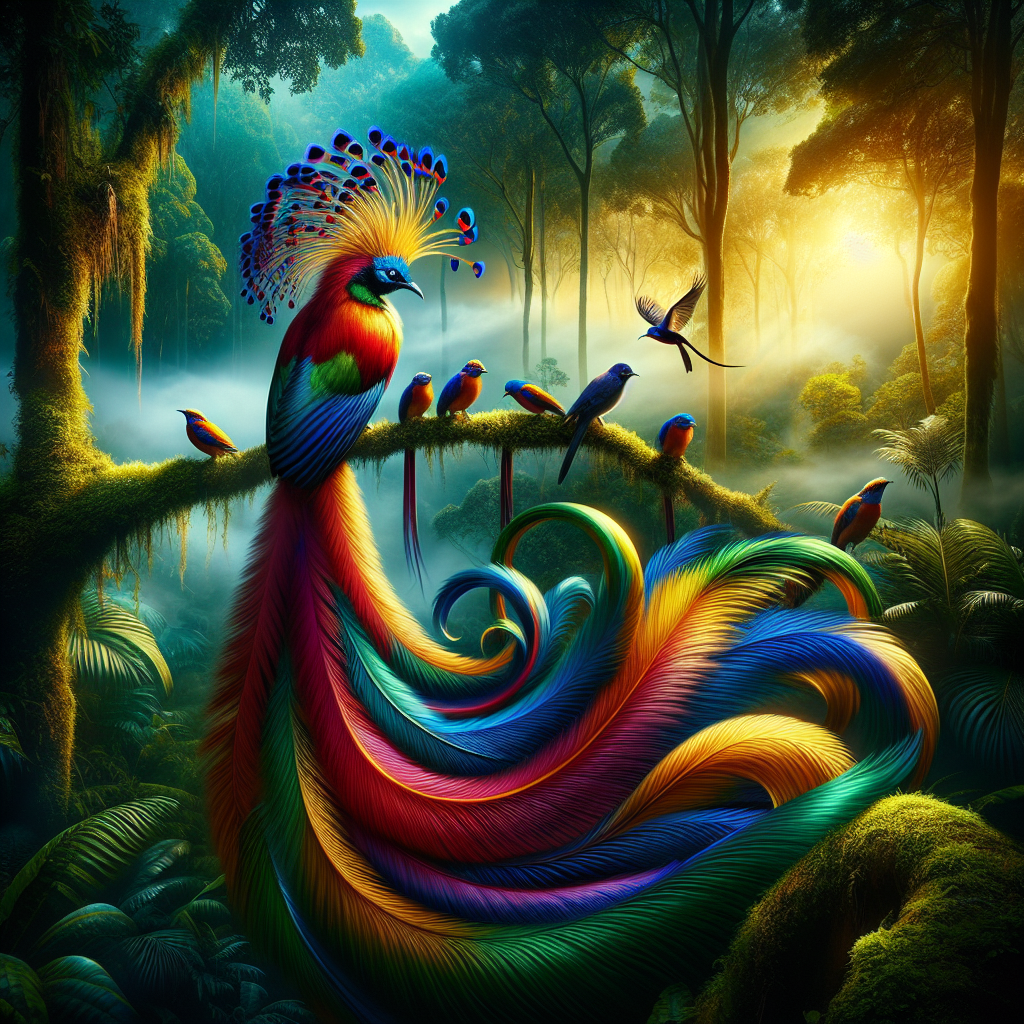Feathers of Fantasy: Discovering the World of Exotic Birds

Feathers of Fantasy: Discovering the World of Exotic Birds
In the realm of natural wonders, few marvels captivate the human imagination quite like exotic birds. Their vibrant colors, intricate patterns, and unique behaviors weave a tapestry of beauty and intrigue that beckons enthusiasts and casual observers alike. This article delves into the enchanting world of exotic birds, exploring their habitats, characteristics, and the role they play in their ecosystems.
The Color Palette of Nature
Exotic birds are often celebrated for their dazzling plumage, a kaleidoscope of hues that ranges from the electric blues of a Blue Macaw to the radiant yellows of the Golden Pheasant. But the splendor of their feathers goes beyond mere aesthetics; it is deeply rooted in evolution and survival. Brightly colored feathers can signal health and fitness to potential mates, while patterns may serve as camouflage among the foliage of their native habitats.
Species like the Resplendent Quetzal, with its iridescent greens and striking long tail, not only mesmerize birdwatchers but also hold significant cultural importance; revered as symbols of freedom and beauty in many Central American cultures.
A Symphony of Calls
Beyond visual charm, exotic birds contribute an auditory richness to their environments. The calls of birds like the Lyrebird and the African Grey Parrot serve a variety of purposes, from mating displays to territorial claims. Lyrebirds, in particular, are known for their extraordinary ability to mimic natural and artificial sounds, incorporating everything from chainsaws to camera shutters into their repertoire. Their songs showcase the intersection of nature and human influence, highlighting the complexity of avian communication.
Habitats and Adaptations
Exotic birds are found across diverse ecosystems, from the lush rainforests of South America to the arid deserts of Australia. Each species has evolved specific adaptations that allow it to thrive in its unique environment. The adaptability of the Kakapo, a flightless parrot from New Zealand, speaks to survival strategies—this nocturnal bird has developed a robust, ground-dwelling lifestyle in the absence of mammalian predators.
Conversely, the highly migratory nature of the Arctic Tern epitomizes the endurance and navigational skills of birds, traveling thousands of miles yearly between breeding grounds in the Arctic and wintering spots in the Antarctic. Such journeys highlight the intricate web of life and the environmental cues that dictate avian behavior.
Conservation Challenges
Despite their resilience, many exotic bird species face critical threats from habitat loss, climate change, and illegal wildlife trade. The IUCN Red List categorizes numerous species as endangered or critically endangered, underscoring the urgent need for conservation efforts. Organizations and individuals are mobilizing to protect these avian treasures, advocating for the preservation of their habitats and the development of sustainable practices to alleviate human impact.
Community-based conservation initiatives have emerged as a vital approach, empowering local populations to engage in protecting their local avian fauna. Eco-tourism also plays a growing role, providing financial incentives for the preservation of natural habitats while offering birdwatchers the chance to witness these exotic wonders in their natural environments.
The Joy of Discovery
Birdwatching has blossomed into an increasingly popular hobby, as individuals seek to connect with nature and discover the avian diversity around the globe. For many, the thrill of spotting a rare bird or witnessing a spectacular display of courtship is a profound experience. Birdwatching not only fosters a deeper appreciation for biodiversity but also strengthens the impetus toward conservation by forging a personal connection to nature.
Photographers and artists have long found inspiration in exotic birds, capturing their beauty through various mediums. From ornithologists studying their behaviors and interactions to hobbyists sharing their sightings on social media, the fascination with these creatures transcends borders and cultures.
Conclusion
The world of exotic birds is a testament to the diverse beauty of our planet and the intricate ecosystems they inhabit. Their vibrant colors, captivating calls, and unique adaptations speak to the wonder of evolution and the interconnectedness of life. As we continue to explore, celebrate, and protect these feathered ambassadors of nature, we must also recognize our responsibility to ensure their survival for generations to come. In discovering the feathers of fantasy, we unlock the door to a deeper understanding of our planet and our place within it.